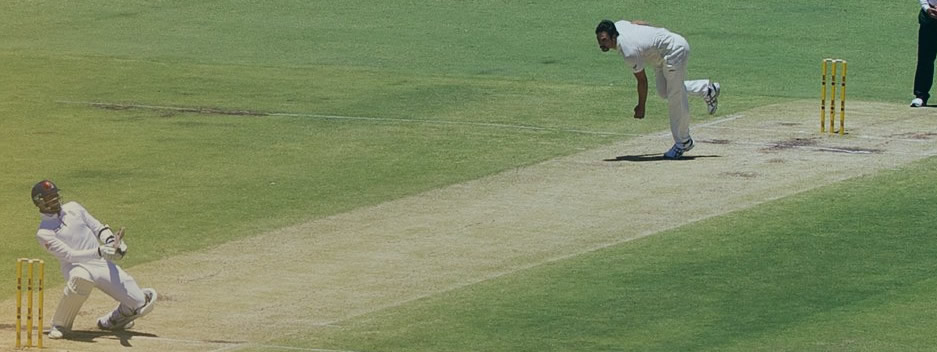Concussion Protocols in Sport
- May 1st, 2019
- Tom Bean

Concussion is a hot topic within modern sport. The awareness of causes and risks have increased recently as a result of high-profile tragedies and similarly high-profile successes of dealing with the injury effectively.
In 2014, England and Great Britain hockey player, Simon Mantell, took a knock to the chin during a domestic league game. Initially not showing any symptoms of concussion, his condition deteriorated after the game with blurred vision and headaches.
At training the next day, the medical staff prevented him from training, citing the symptoms as a reason to sit out, not allowing him to return until the symptoms subsided. Once seemingly clear of symptoms, the staff put Mantell on the 'return to play protocol' however, his progress throughout was stunted by recurring symptoms after exercise, forcing him back to the start of the process.
It took Mantell almost a year to be able to free himself of the symptoms post-exercise and return to playing after reducing his cognitive stimulation to minimal levels. [1]
Awareness is limited and protocols not strictly followed
In other cases, where awareness was potentially limited and protocols not strictly followed, the outcomes have been tragic. At the beginning of 2019, rugby saw four deaths as a result of tackles on the field, the most recent experiencing extreme symptoms after feeling the effects, having to be induced into a coma.
At elite levels, in particular, steps have been taken to reduce the impact on concussion. The 'RFU and Premier Rugby, which governs the top domestic league, introduced a mandatory online concussion awareness module for all coaches, officials and players' to improve individuals understanding of the injury. [2]
The 'English Premiership subsequently became the first league in the world to introduce an instant video review system to spot potential concussions on the sidelines' however, outside of the elite levels, how far is this education reaching? [2]
Despite increased awareness, in 2017, 15% of students participating in sport in the US reported having at least one concussion within the 12 month period [3] - 69% of these continued to play with concussion symptoms. [4]
Concussion is being neglected at lower levels
These are pretty damning figures highlighting how the seriousness of concussion is being neglected at lower levels, in spite of the initiatives that take a stance against the mistreatment of concussions in professional sports.
As with every sport, concussions are a risk. By educating coaches, parents and officials at the lowest levels, long-term and potentially damaging effects of this unique injury can be stemmed and the recovery process can be administered properly across all levels.
This week, the MCC marked the start of the cricket season with an elearning module, specifically aimed to educate those at the grassroots level about the signs, symptoms and risks and what course to take if a player is deemed to have sustained a concussion.
What can you do?
- Look for symptoms
- Any dizziness, nausea, blurred vision?
- If symptoms are present, the player must be removed from the field immediately - a second blow puts the individual at a much higher risk of sustaining long-term injuries.
When symptoms surpass and 14 days of rest has been completed, the individual must go through the 'Return to Play Protocol'.
The Return to Play Protocol
Stage 1
Rest without symptoms
Stage 2
Light aerobic work at <70% of aerobic capacity
Stage 3
Sport-specific exercise - running drills with no impact
Stage 4
Uncontested training drills - increase complexity of drills with skills included
Stage 5
Contested training drills - train regularly
Stage 6
Return to play
If symptoms recur after any stage, the individual must go back to the first stage after 24 hours of rest to go through the protocol again.
Each stage should be done 24 hours after the previous one. The individual can only return to play once each stage has been completed in secession without any symptoms.
[1] England Hockey, 2015. The Comeback: Simon Mantell http://www.englandhockey.co.uk/news.asp?itemid=34003&itemTitle=The+Comeback%3A+Simon+Mantell§ion=22 [Accessed 30-04-2019]
[2] Sam Peters, 2019. Rugby and concussions: When will the sport come to its senses and tackle this serious problem? https://www.independent.co.uk/news/long_reads/rugby-concussion-head-injury-problem-a8803111.html [Accessed 30-04-2019]
[3] DePadilla L, Miller GF, Jones SE, Peterson AB, Breiding MJ. Self-Reported Concussions from Playing a Sport or Being Physically Active Among High School Students - United States, 2017. MMWR Morb Mortal Wkly Rep 2018;67:682-685. DOI: http://dx.doi.org/10.15585/mmwr.mm6724a3
[4] Centers for Disease Control and Prevention. (2017) HEADS UP: Concussion in Youth Sports Online Training. Centers for Disease Control and Prevention. National Center for Injury Prevention and Control; Division of Unintentional Injury Prevention. Atlanta, GA. Retrieved July 30, 2018. https://www.cdc.gov/headsup/pdfs/youthsports/course/HU-YSC_Transcript_2017-a.pdf